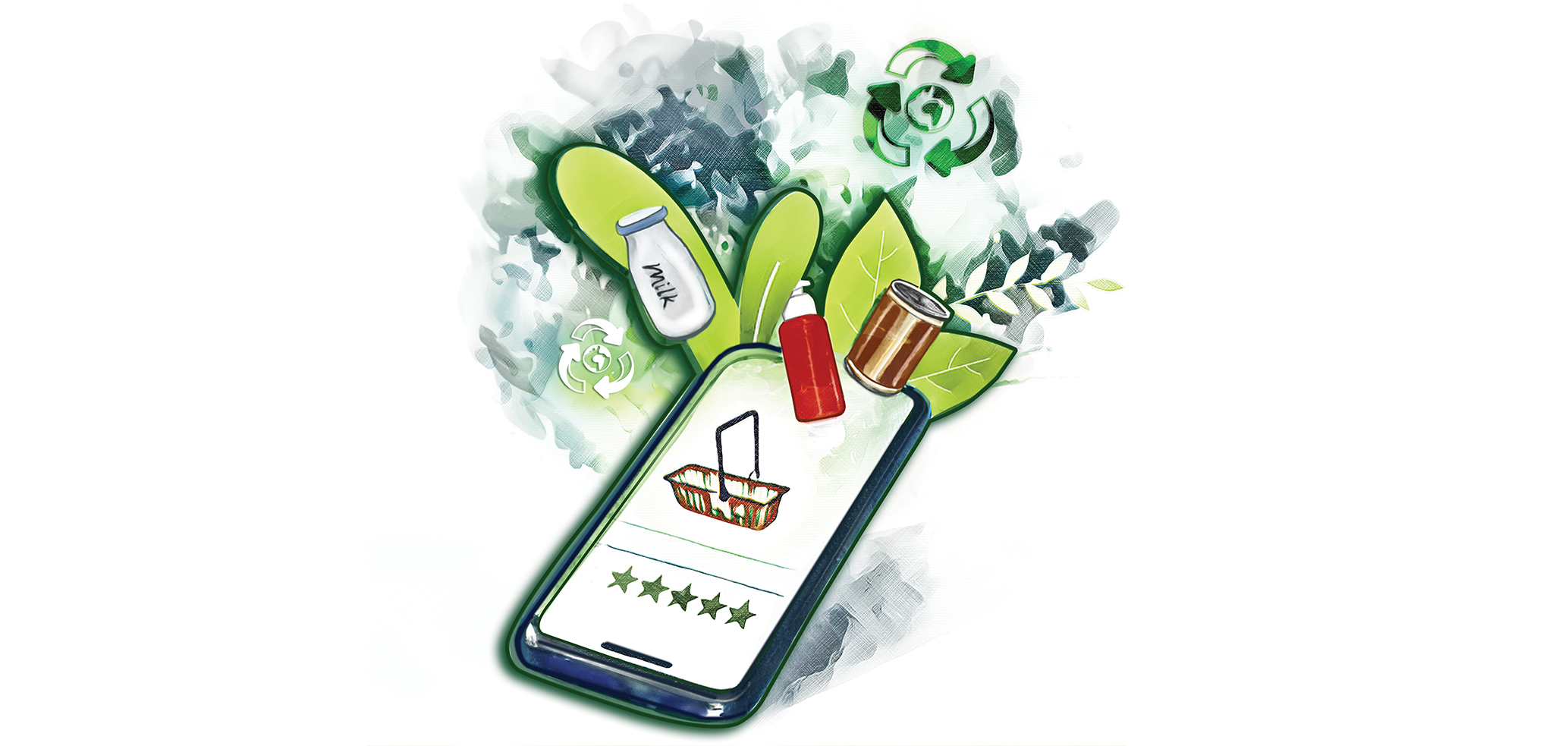GreenGrub: An app dedicated to food sustainability and healthy eating
Users can scan foods, exchange food scores with friends, and participate in quizzes in an app dedicated to adopting healthier eating habits and inspiring sustainable choices.
Developed by the Google Developer Student Clubs (GDSC) at the University of Toronto Mississauga, GreenGrub is a free application that enables users to easily access sustainability and nutrition ratings of everyday food items.
In an interview with The Medium, the app’s developers, Adel Muursepp, Henrik Zimmermann, Isha Juneja, Razeen Ali, and Shivangi Pathak, and their supervisor, mathematical and computational sciences professor Rutwa Engineer, shared some of GreenGrub’s features, purpose, and its developmental process.
Interactive features for healthy eating and learning
The main feature is its food scanner. Zimmermann explained that users can scan items using the app’s barcode feature, which provides detailed information about the product, including its nutritional content and sustainability impact. “Users can then move items into their shopping carts. As you finish up those carts, you are assigned a score based on the average nutrition scores of the products,” said Zimmermann.
Along with the food scanner, the club incorporated a unique feature where users can add friends and exchange food scores. Individual ranking is based on the nutrition and sustainability value of their food items.
The app also features games designed to inspire users to adopt sustainable habits. “That’s how we plan to make an impact. Starting small, and hoping [GreenGrub] will expand from there,” said Juneja.
“The app also has educational features,” Zimmermann elaborated. “There is a quiz mode where you can learn more about sustainability and additional facts.” Users can compare quiz scores with their friends and compete using their knowledge of food production and consumption.
With the food scanner and the food score leaderboard, GreenGrub transforms grocery shopping into a fun and educational experience.
A step toward promoting sustainable living
The idea behind the app is to help people lead more sustainable lives. Juneja noted that many people are unaware of how to adopt sustainable practices, a factor that the developers considered.
“So, we narrowed it down, because sustainability is [a broad topic]. We decided that we wanted to focus more on food sustainability, not only because it helps the environment, but also because it helps the individual,” said Juneja.
Another component the team considered is food production, which according to Muursepp, has become an increasingly alarming issue. Muursepp explained that food production emits 26 per cent of carbon gas emissions. “We wanted to let people know, at the moment of shopping, if what they’re buying is sustainable or not,” said Muursepp.
Practicing food mindfulness can be complex and demanding for some people. However, GreenGrub makes it easier for users to learn and incorporate healthy food habits.
“A lot of times we impulsively buy things and [even though] there are nutrition tables at the back of the products, most of us don’t really take the time to read it. [Many] want a summarized version of it,” mentioned Pathak.
GreenGrub uses an open database to research food information and determine food scores on their app. The data is based on a life cycle assessment with two main portions: production and environmental impact.
“Some of the things in the production steps would be agriculture, the processing or the packaging of the foods. And then the environmental impact would be the climate change, carbon footprint, stuff like that,” Juneja explained.
Improving accessibility to information on food sustainability
Muursepp mentioned that healthy eating and food sustainability are related to personal well-being. However, information on these topics is often not easily accessible. Even with this information, it can be hard for students to practice healthy initiatives.
“A lot of students, especially in the University of Toronto (U of T) are very busy,” Muursepp said. “So they do not have a lot of time to plan their meals, read [information on food] or even know what is sustainable, what is not, or what is good for them and what is not.”
Muursepp stated that the team aims to address this issue by helping students integrate healthy and sustainable food practices into their lives.
Overcoming challenges with the creation of GreenGrub
During the creation and launch of GreenGrub, GDSC faced several challenges during the design process, especially in terms of time management. “All of us were taking five to six courses, and the goal was to build it from design to finish within four months,” Ali revealed.
According to Ali, the team also struggled with determining whether a certain food is sustainable or not. With the help of open-data sources and research, the GDSC team collected information to identify which foods are sustainable and which are not.
Another challenge faced by the team was deciding how to design games for users in the app.
Unlocking the full potential of GreenGrub
Although GreenGrub’s features are unique and beneficial for its users, this is not the end for the GDSC team. While the team was unable to further expand the app due to time constraints, opportunities to maximize its potential remain open. “Eventually, we would also like to add partnerships with other sustainable businesses so [students] can get coupons and discounts for it,” said Pathak.
As an open-source application, GreenGrub is available for other interested developers to contribute to it.
Despite the challenges faced during its development, the team has laid a strong foundation for future enhancements. Moving forward, Pathak suggested that GreenGrub could incorporate in-person challenges with friends where users can engage in sustainability-related activities around the community.
As GreenGrub continues to evolve, it holds the potential to empower more users to make informed choices, ultimately contributing to a healthier planet and a more sustainable future.

